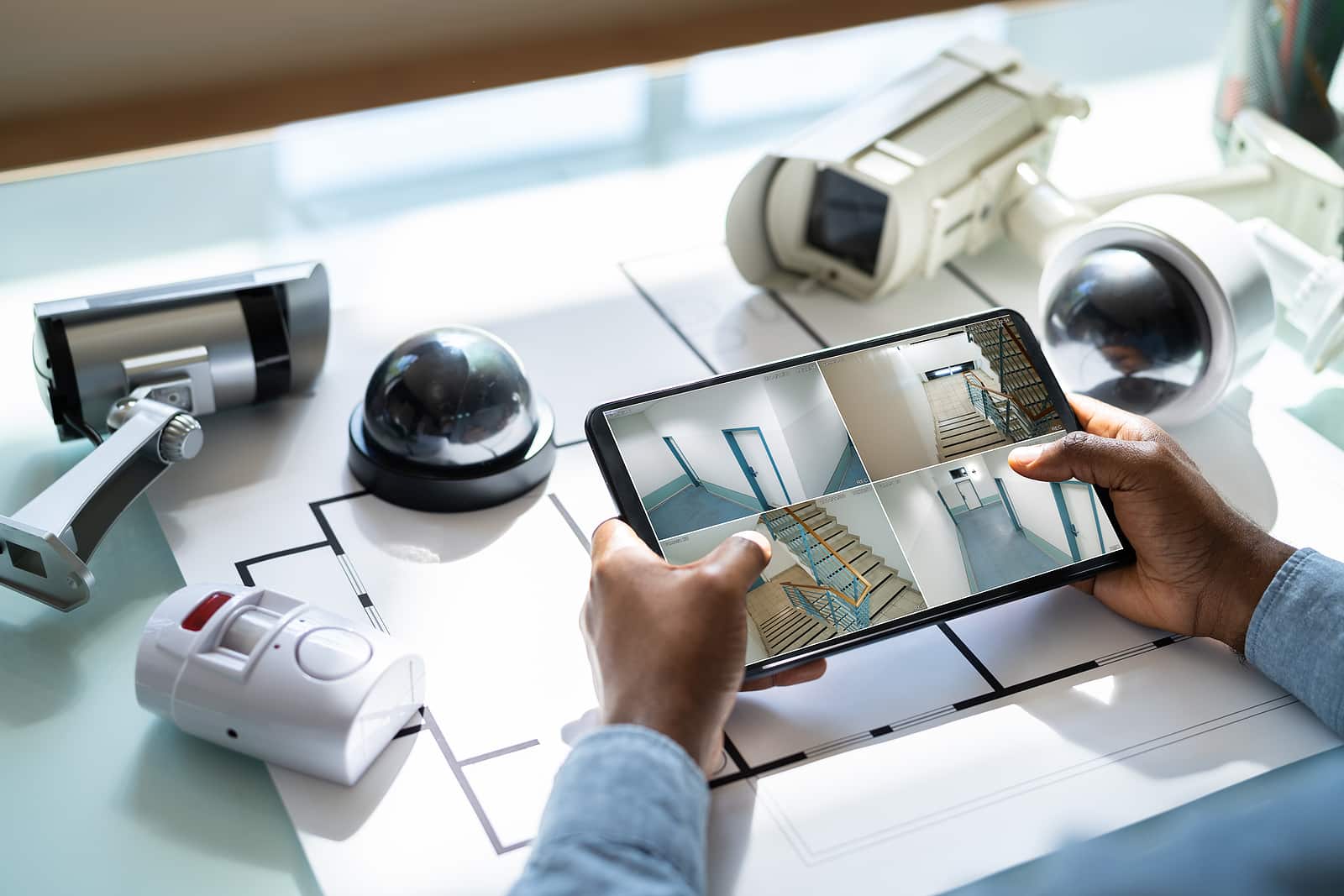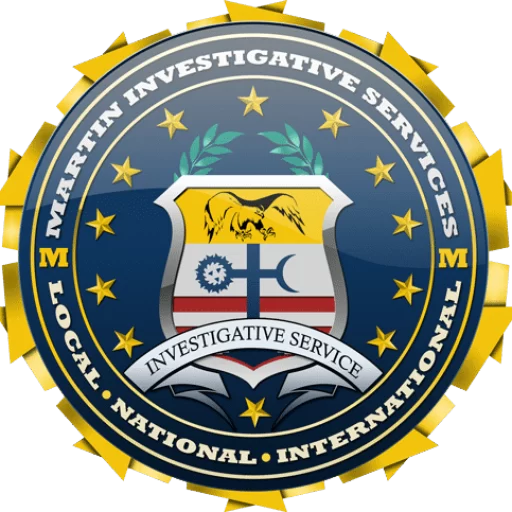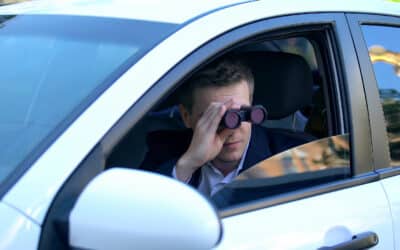
Finding Listening Devices in Corporate Offices
Listening devices in corporate offices can be used for several purposes. People use them to spy on employees or clients, for corporate espionage, and even by people who work at the office.
Our agency is composed of former federal agents of the DEA, FBI, IRS and Secret Service. This insures our level of experience and knowledge is unsurpassed in our profession. We serve clients in all 50 states and in numerous foreign countries.
If you’re concerned about the possibility of having a listening device in your office space or during meetings, here’s how you can find them using common household items:
Call (800) 577-1080


Listening Devices and Corporate Espionage
Corporate espionage is the practice of companies spying on each other. Companies can use this information to gain an advantage over their competitors and profit. If you suspect your company is spying on you, there are some ways to detect it.
First, check the common workplace areas, such as break rooms and restrooms, for any listening devices and electronic bugs. These devices are usually small and easy to hide behind or under things like tables or chairs.
Second, check all electronic equipment, including computers and printers. There could be small devices attached to them with wires leading into the wall or ceiling where they are hidden from sight.
Types Of Listening Bugs Used Today In Office Settings
Microphones are used for eavesdropping on conversations. They’re attached to the walls or ceilings and hidden behind paintings, clocks, or other decorative items.
Video cameras disguised as smoke detectors, wall clocks, or lamps. The lens is usually in the upper part of the device so that it’s not visible from a distance.
Wireless devices are small transmitters that send data through radio waves instead of cables. They’re concealed in pens, calculators, and other small objects so they can be easily hidden and moved around undetected by security guards or building maintenance workers when necessary (such as during office renovations).
Bugs hidden in electrical outlets allow people to listen in on conversations while sitting at their desks. Perpetrators may also place these devices inside wall sockets next to your desk.
You may never suspect anything is amiss when you plug something into one of those outlets yourself. But your microphone might pick up all kinds of juicy details about what’s going on with coworkers.
Who Are The Likely Suspects?
Because of corporate data’s sensitive and confidential nature, you should assume that everything—and everyone—is bugged. This is a good rule to live by in any corporate environment. Don’t think it won’t transmit your secrets just because the device is small, old, rusty, and hidden in plain sight.
Of course, there are several possible suspects in tracking down listening devices. These include employees, ex-employees, competitors, family members, and ex-spouses. All these people are interested in listening to conversations or stealing information from your company.
Why Are Audio Bugs Used In Corporate Espionage?
The main reason why audio bugs are common in corporate espionage is that they enable spies to listen in on conversations and to record information. The perpetrators then use these recordings can then be used for blackmailing or extortion purposes. They can also sell the information or use it to gain a competitive advantage over you.
Listening devices can grant malicious people access to privileged information such as financial records, contracts, and other important data. If you have suspicions that your company might be under audio surveillance, we can help you determine whether or not it’s true!
Our investigators are Forme agents. Our network comprises private investigators that are former Drug Enforcement Administration, FBI, IRS, and Secret Service agents. Being professionals in Corporate Security investigations, such as bug sweeps, and employee theft.. We will provide you with the most reliable results possible.
What Does A Spy Bug Look Like?
Regarding listening devices, spy bugs may look like everyday objects. Bugging devices look like buttons, coins, pens—even USB drives or key fobs. Some have microphones hidden in them that transmit conversations to a receiver nearby. Other listening devices are small enough to fit behind electrical outlets or inside light switches to record the sounds of what goes on in the room without anyone noticing their presence.
Is It Legal To Record Audio At Work?
Let’s get one thing out of the way: it is legal to record audio at work, provided that you have consent from those involved. But bugging, not the same as recording, is often done for malicious and illegal reasons.
Do you know how to tell if your office is bugged? Are there any signs that indicate whether or not an office room has been bugged? Where can listening devices be found? We’ll answer these questions in the section that follows.
How Do You Detect An Audio Bug?
Detecting listening devices is complicated, and no method works for every situation. You need to consider both the structure of your building and the device itself. The size of an audio bug makes it easy to hide; it can be concealed in walls, under carpets, inside furniture, or even behind a picture frame. In some cases, corporate spies hide them inside light bulbs or other seemingly innocuous objects, making finding them that much more difficult!
How to tell if your office is bugged
These are the most common ways you can spot a listening device in an office: Check for unusual wires or devices. If you see any wires or devices that seem out of place, check them carefully for strange components and contact your IT department if necessary.
Check for unusual microphones and speakers. You might find microphones hidden in everyday objects like lamps, clocks, and smoke detectors. Spies can also install speakers inside computer screens and other items like picture frames.
Look for unusually designed light fixtures with visible wiring that doesn’t belong there. Spies may disguise cameras as smoke detectors. Light fixtures may have microphones attached to them rather than their regular bulbs so they can simultaneously listen in on conversations from both sides.
Check for signs of tampering or damage to walls, doors, furniture, or fixtures where there may be listening devices. If you notice suspicious activity—unusually frequent visits by outsiders, it may warrant further investigation before entering the area under suspicion. Listen carefully for strange sounds coming through walls or windows. A sign of interference on an audio recording device nearby may indicate the presence of listening devices.
How To Detect Hidden Listening Devices
Sweep the room with a bug-detecting device. This device picks up sounds so you can listen to any conversation the bug might be picking up. Use a frequency detector to find listening devices that use radio waves instead of sound waves, such as those found in Wi-Fi routers and wireless cameras.
Use a metal detector with an Audio Detection System (ADS) option to look for wireless and wired audio surveillance devices. The ADS feature will help you detect hidden microphones by using high-frequency sounds emitted by them.
The ADS detector will let you know if any hidden wires are running through your walls or floors that could act as receivers for bugs inside your building’s walls/floors/ceilings/etc.).
Use an X-ray machine to see what’s happening behind closed doors, like filing cabinets or conference rooms where people meet regularly. If there is anything suspicious inside these closed spaces–like a box filled with wires sticking out from all sides–it’ll show up very clearly on film.
Other ways to detect listening devices or hidden cameras
- Check for tiny holes in the walls or ceiling, which could hide cameras and microphones.
- Check the vents and air conditioner unit for any suspicious devices installed there.
- Examine all electronics for signs of tampering and installation of audio equipment.
How Do You Find An Audio Device In A Room?
If you suspect your office or workplace has bugs, the first place to look is on the wall. Some listening devices are hidden inside small holes drilled into walls and ceilings.
These can be hard to spot, so keep an eye out for anything that looks different from its surroundings. For example, if there’s a small hole in a wall but nothing else near it or connected to it (like drywall screws), chances are good there’s an audio device inside that hole.
Another common location for listening devices is under desks and tables—especially ones where people sit for long periods, like conference rooms and offices with cubicles. There could even be one right under your feet! Check under surfaces where someone could hide something without being seen easily by others in the room.
You may not find audio recording devices installed independently. Sometimes, they’re hidden among other office supplies like pens or pencils. If you notice anything suspicious—such as pens with wires coming out of them—check them carefully before using them yourself!
An RF detector is an effective way to find all types of hidden bugs in an office environment. However, not all listening devices are identifiable by this method—some may not contain enough metal to be detected by a metal detector or may be disguised as other objects that would pass through undetected.
A magnetometer is another useful tool for identifying bugs within walls or other structures. Magnetometers work by using sensors that detect magnetic fields. If something is creating one nearby (such as the magnet inside one type of listening device), this instrument will pick up on it and notify users accordingly.
A spectrum analyzer detects radio frequencies from electrical wiring but cannot identify specific signals without further analysis. This means that if someone were monitoring your phone calls with multiple devices across different frequencies simultaneously, one might not necessarily detect them all because they’re operating on different bands/channels/circles (depending on what you call them).
How to Sweep And Disable Listening Devices In An Office
When sweeping for listening devices, you should check all the surfaces of a room with an RF detector. This will help you identify items that may be in a microphone and also help reveal any extraneous metals that could be causing interference with your device.
Once you’ve identified the presence of a listening device or two, it’s time to disable them. You can do this by using an RF jammer (which blocks signals from transmitting) or by deactivating the batteries inside the device itself.
If you don’t know how to disassemble a specific type of device yourself and aren’t sure what kind of battery it uses, our experts can handle these things themselves while you concentrate on running your business.
What Skills Do You Need To Detect Listening Devices
Listening device detection skills are a must in today’s business world. You’ll need to know how to use your equipment, including a microphone and any software or hardware used for recording devices. You also need investigative skills to discover where listening devices are hidden in the office.
Technical skills are needed because listening device detection requires knowledge of audio equipment and how they work. It’s important to know what type of signals they emit so they can be detected by other means.
Employees should also be aware of the potential for listening devices in corporate offices and trained to recognize them. They can report any suspicious devices via an anonymous tip line. You should train your employees on how to secure their devices using encryption software and password-protecting their phones.
Further, all employees should receive security training on recognizing other security issues, such as hacking attempts or phishing scams.
Hire Professionals
If you suspect your office has been compromised, it’s best to hire a professional to find listening devices and perform a thorough sweep of your office. The last thing you want is to discover that your entire team has been spied on while discussing confidential information.
Our private investigators will know exactly how and where to look for these devices so they can be removed quickly and safely. Additionally, if any bugs are left behind in the room after the search has concluded, they’ll know how long it would take for those bugs’ batteries to die out before they become inactive again (which could be weeks). This ensures all signs of tracking will be gone before employees return to work spaces after being de-bugged.
Conclusion
Keeping your corporate office free from audio bugs is an ongoing process that requires vigilance on the part of all employees. Employers should train their staff to detect listening devices and hidden cameras and protect themselves against surveillance. If you suspect that there might be a listening device in your workplace or home, contact a professional immediately!

Reasons for Hiring a Private Investigator – Martin PI
19 Reasons to Hiring a Private investigator Reasons to Hire a Private Investigator If you live in California and a metropolitan like Los Angeles, Orange County, San Francisco, San Diego, or any other county, understanding how to hire a private investigation company is...
Missing Person Search: Find Loved Ones Quickly & Easily
Missing Person Search It's vital to begin your search quickly if you notice your loved one is missing. It would help if you started by calling the police department and filing a missing persons report. Next, you must begin your search and contact the media if the...
Missing Person Private Investigator Services
Missing Person Private Investigator Services In the United States, there are almost 600,000 names added to the nation's registry of missing persons each year. Even so, you might be surprised to learn that it is only some people who disappear that wind up on the list....
Let Us help you Bring Your peace back!
Private Investigation Near Me - PI Near MeClient Testimonials

I’ve represented individuals and businesses (international and local) for close to fifty years, and I’ve called on Martin Investigative Services more times than I can count, often on a rush basis, for help throughout the world, on a number of different types of assignments. I’ve never been disappointed. I’ve always received swift, cost-effective and USEFUL information, which has wound up “saving the bacon” of our clients and making us shine in their eyes. I recommend them without any reservation.

Martin Investigative Services is truly one of the best run organizations we have worked with. Fair, efficient and professional. Tom Martin in particular exudes confidence and experience and isn’t afraid to tell it like it is. That’s something we can rely on.

Successful people know that to be the best, you model the best. I cannot recommend Martin PI any higher! In a five-minute conversation with experienced people you can save thousands by bypassing sales types. They do this by cutting directly to the heart based on years and years of passionate pursuit of best practices and adding massive value to their clients. They are an invaluable part of my team and Tom is my most valued mentor!

Martin Investigative Services has performed background checks, private investigation, surveillance and bug sweeps for our clients. They have also served difficult process in lawsuits. They have performed unquestionably and unfailingly to perfection. We will always call Martin first – and hope he hasn’t been called yet by the other side!

We have used Martin Investigative Services for three decades. Their work is exemplary; reports are perfect and their testimony is very professional, with great judge and jury appeal. We will not use anyone else for our investigations.

It has been my pleasure to work with Martin Investigative Services over the past 30 plus years on many investigations as well as other security related matters. When I need answers and I need them fast I know that a simple call will get me answers that are succinct, current and coming from a supremely knowledgeable source.
MartinPI Operates throughout the United States and foreign countries
We can have a team ready in 2 days. Are you ready?We respect your time and thank you for stopping by. Please look around and learn about our services. Should you need help today, simply press the button below.

call us today
Martin Investigations is second-to-none!Start by contacting us and a meeting will be set up. Call (800) 577-1080



